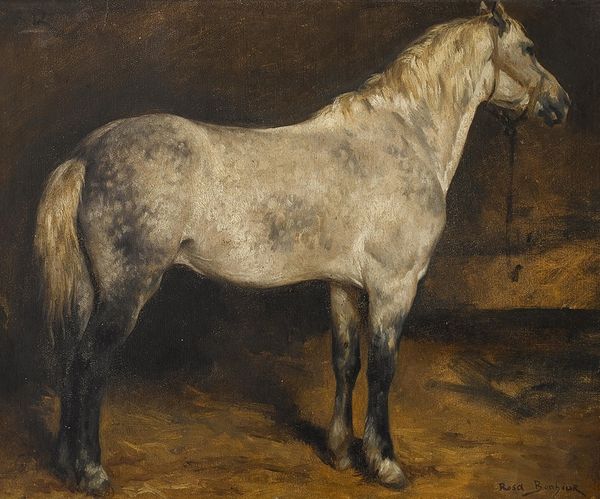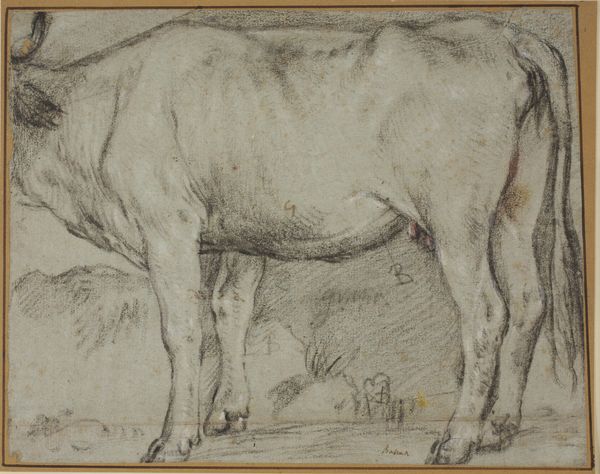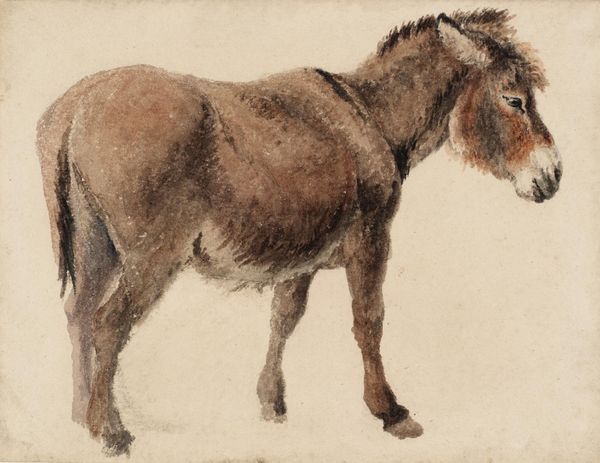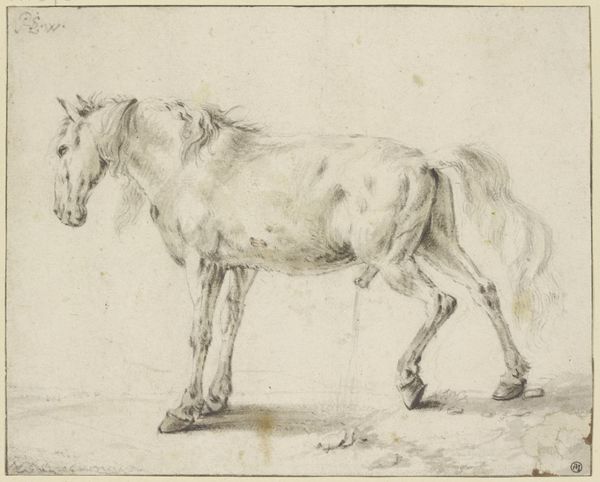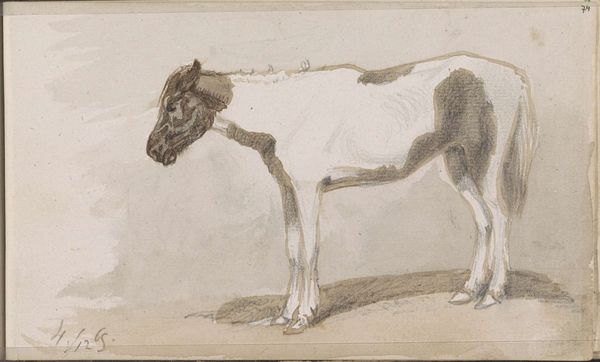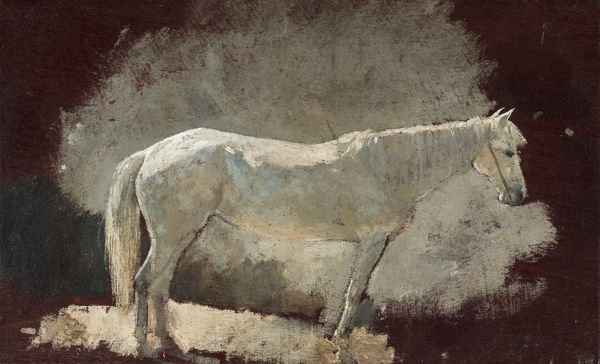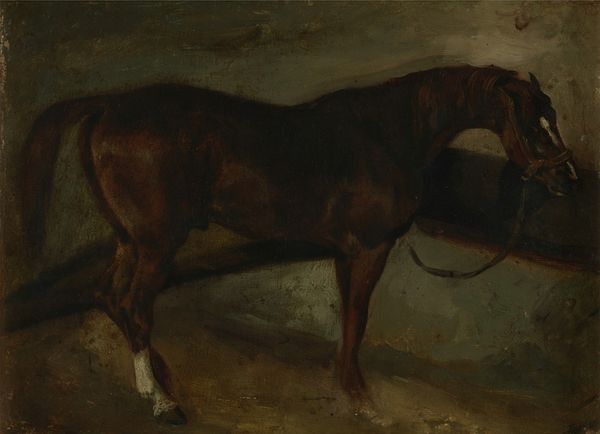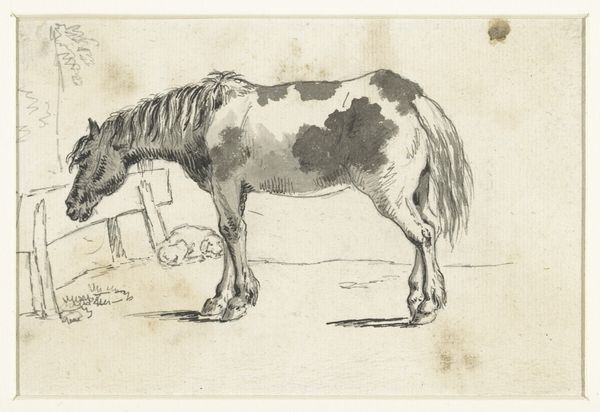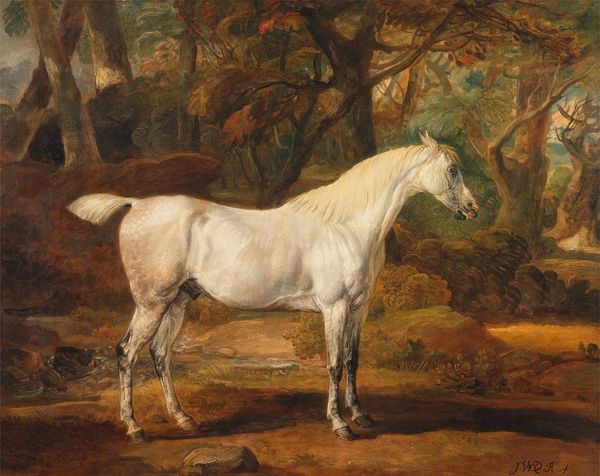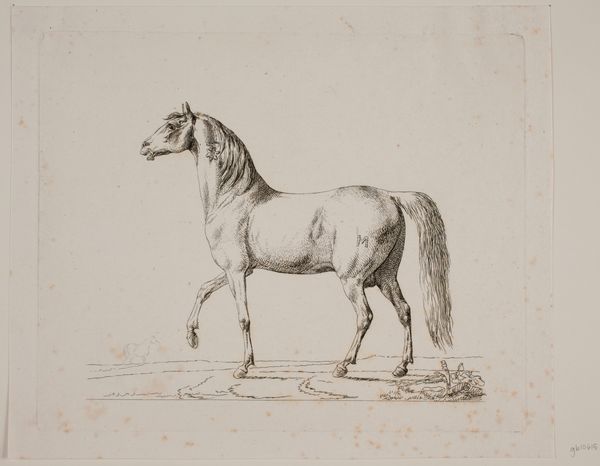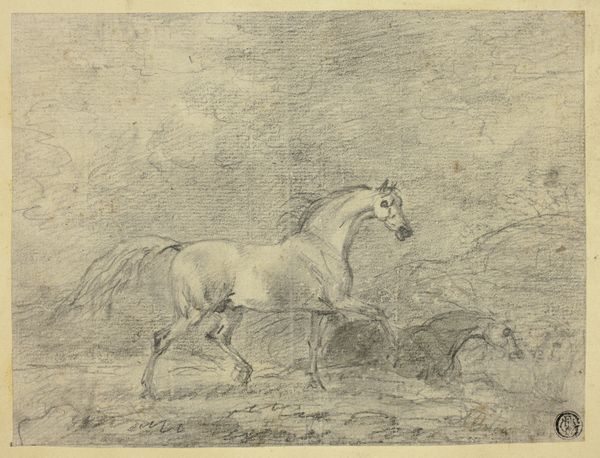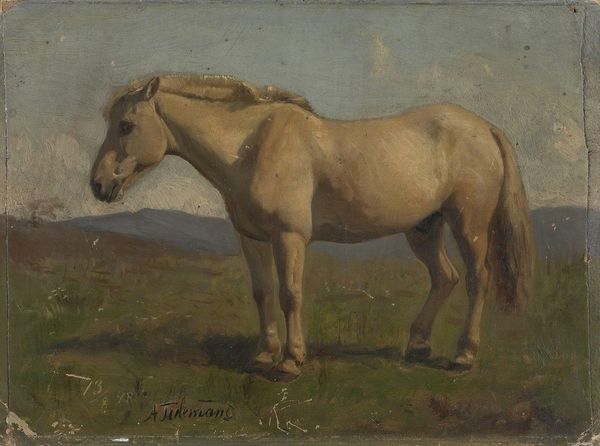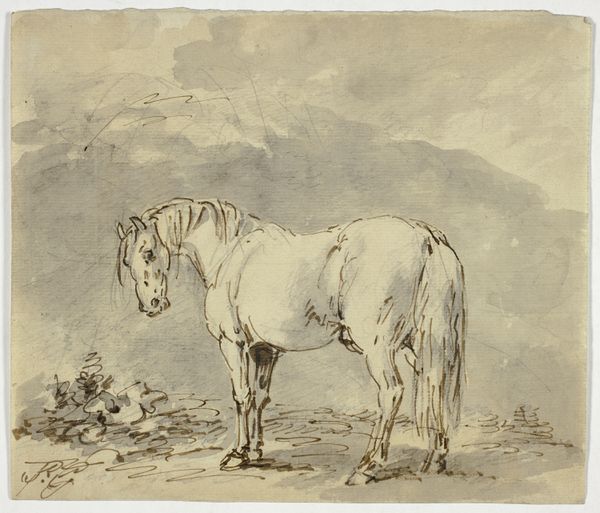
Copyright: Public Domain: Artvee
Curator: Gustave Courbet painted "L'âne", or "The Donkey," sometime between 1862 and 1863. It’s an oil on canvas piece depicting a donkey in a field. Editor: Immediately, the somber color palette strikes me. It evokes a feeling of isolation and hardship. The way Courbet has rendered the donkey almost blends it into the earth. Curator: The composition is interesting. Courbet positions the donkey slightly off-center. What impact do you think that choice has? Editor: By slightly offsetting the animal, there’s a visual pull away from any inherent nobility associated with landscape painting and it amplifies the very ordinariness of the subject. This is Courbet challenging the hierarchy. It also mirrors the social realities of the time where labor was devalued. Curator: His brushwork is also quite gestural here. Notice how the application of paint seems almost deliberately crude. What could this signify? Editor: Right, he isn’t romanticizing the animal at all. The deliberate roughness feels almost defiant, echoing the Realist movement's aim to depict life without idealization. This is Courbet emphasizing the raw realities. It almost seems he's acknowledging the toil and hardship ingrained in everyday existence. Curator: The handling of light and shadow also seems purposeful. Notice how certain areas of the animal are heavily shadowed, and the highlights create a kind of muscular presence? Editor: It amplifies the animal's physical reality and maybe subtly gestures at its role as a working animal in rural French society at the time, carrying burdens, so to speak. Curator: Ultimately, through this canvas, we witness not just an animal, but an engagement with a range of subjects. Editor: Indeed, it reveals to us much about labor, societal structures and Realist ideology during mid-19th century France.
Comments
No comments
Be the first to comment and join the conversation on the ultimate creative platform.
